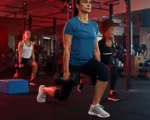Recovery is just as important as training when you’re an endurance runner aiming for peak performance. Proper recovery allows your body to repair, rebuild, and come back stronger for the next challenge. Without it, even the best training plan can lead to burnout, fatigue, or injury. This guide provides evidence-based tips and techniques to help you optimize recovery and maintain top performance.
Why Recovery Matters for Endurance Runners
When you run long distances, your body experiences muscle damage, energy depletion, and increased stress. Recovery is the process that allows your body to refuel, repair those muscles, and adapt to training demands. Proper recovery also reduces inflammation, decreases the risk of overuse injuries, and helps you get back to running faster and stronger.
Remember, recovery isn’t just about rest. It’s about actively helping your body meet its needs for repair and renewal.
Top Recovery Methods for Endurance Runners
Here are three effective recovery techniques every endurance runner should have in their toolbox:
Active Recovery
Active recovery involves light physical activity instead of complete rest. It helps increase blood flow to your muscles, speeding up the removal of lactate and promoting the delivery of oxygen and nutrients to repair tissues.
Examples of Active Recovery:
- Easy cycling or swimming
- Casual walks
- Low-intensity yoga or stretching sessions
While research isn’t definitive, many athletes report feeling less sore and more mobile after incorporating active recovery into their routines.
Cold Water Immersion
Cold water immersion, often called an ice bath, involves soaking your legs in cold water (50–59°F) for 10–15 minutes. This reduces inflammation, decreases muscle soreness, and can speed up muscle recovery after high-intensity training or long runs.
Pro Tip:
- If you don’t have access to an ice bath, even a cold shower can offer some benefits.
Foam Rolling
Foam rolling involves using a roller to apply pressure to your muscles. This self-myofascial release technique enhances blood flow, helps release muscle tightness, and reduces delayed onset muscle soreness (DOMS).
How to Foam Roll:
- Focus on large muscle groups like your quads, calves, glutes, and hamstrings.
- Roll slowly and stop when you hit a tender spot.
- Spend 1–2 minutes on each muscle group.
Supporting Techniques for Optimal Recovery
Rest and Sleep
Sleep is often underrated in recovery, but it’s crucial. During deep sleep, your body releases growth hormones that support muscle repair and regeneration. Aim for 7–9 hours of quality sleep each night.
Quick Tips for Better Sleep:
- Stick to a consistent bedtime
- Avoid screens 30 minutes before sleeping
- Create a relaxing nighttime routine
Nutrition and Hydration
Your muscles need fuel to recover. Replenish glycogen levels by consuming carbohydrates after runs, and repair muscle damage with protein. Staying hydrated ensures optimal muscle function and recovery.
Post-Run Refueling Ideas:
- A banana with a protein-rich smoothie
- Whole grain toast with nut butter
- Greek yogurt with berries and granola
Stretching
Stretching can improve flexibility, release tension, and prepare your body for future runs. Incorporate dynamic stretches before runs and static stretches post-run to enhance recovery and movement patterns.
Suggested Stretches:
- Hamstring Stretch
- Quad Stretch
- Hip Flexor Stretch
Benefits of an Effective Recovery Routine
When you prioritize recovery as much as your training, you’ll notice:
- Improved endurance and strength
- Reduced risk of overuse injuries
- Better energy levels for subsequent runs
- Enhanced mental focus and motivation
Remember, rest isn’t laziness – it’s part of the process of becoming a stronger, faster runner.
Putting It All Together
To make recovery part of your routine, consider creating a simple plan:
- Incorporate active recovery days after hard training sessions.
- Keep a foam roller handy and use it daily for tight or sore muscles.
- Take cold water baths after intense workouts.
- Prioritize quality sleep and refuel with nutritious meals.
Take Your Recovery to the Next Level
Looking for more personalized tips? Tap into expert advice. At the Center for Sports Performance and Research, athletes use cutting-edge recovery tools like cryotherapy, float therapy, and red-light therapy to optimize performance. Explore the range of recovery solutions available to elevate your training and recovery game.
Recovery isn’t just an afterthought; it’s the foundation of sustained athletic success. Start building a recovery routine today to stay strong, injury-free, and ready to chase your next running goal!








